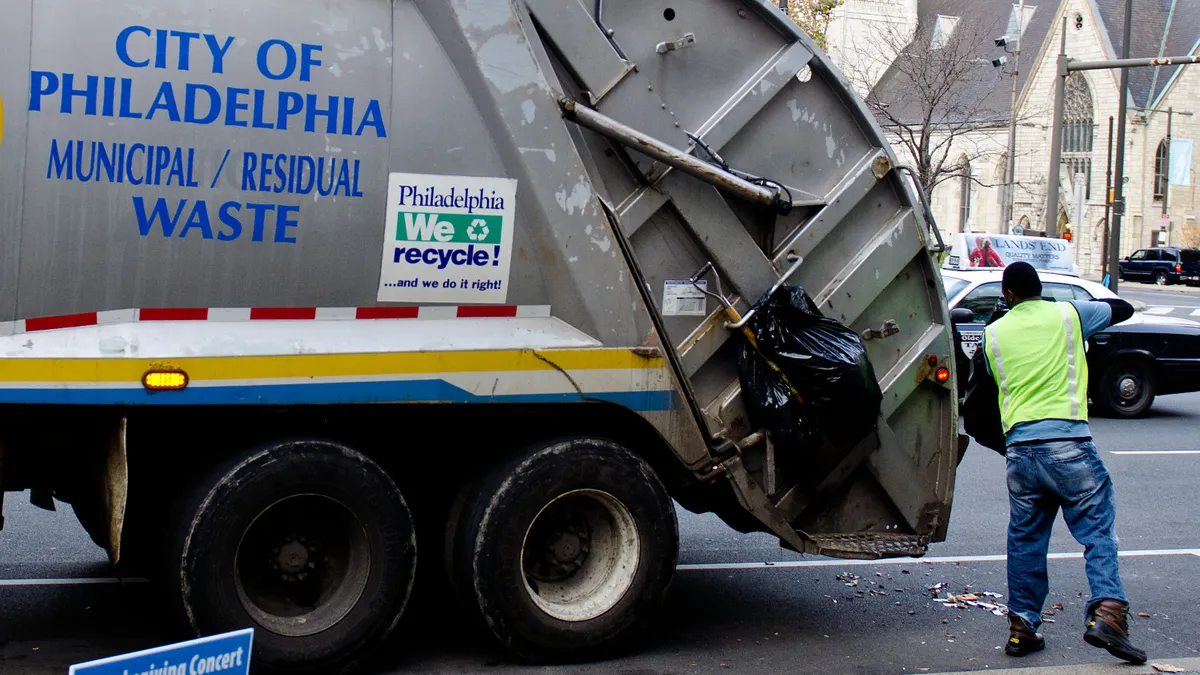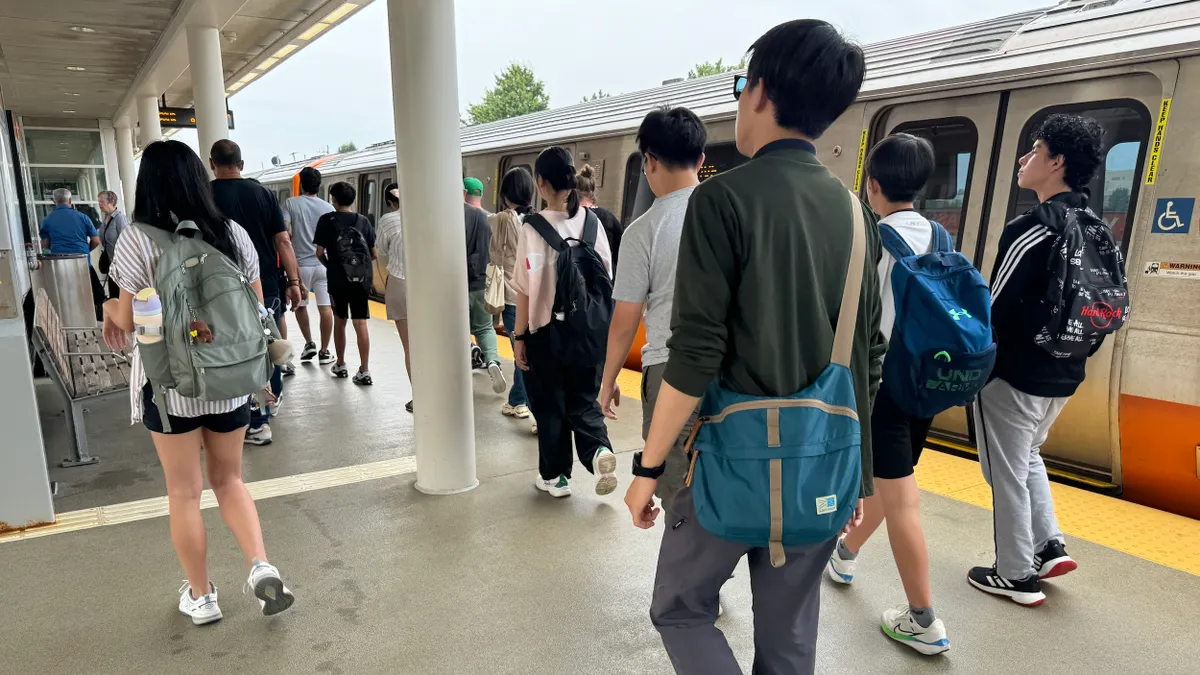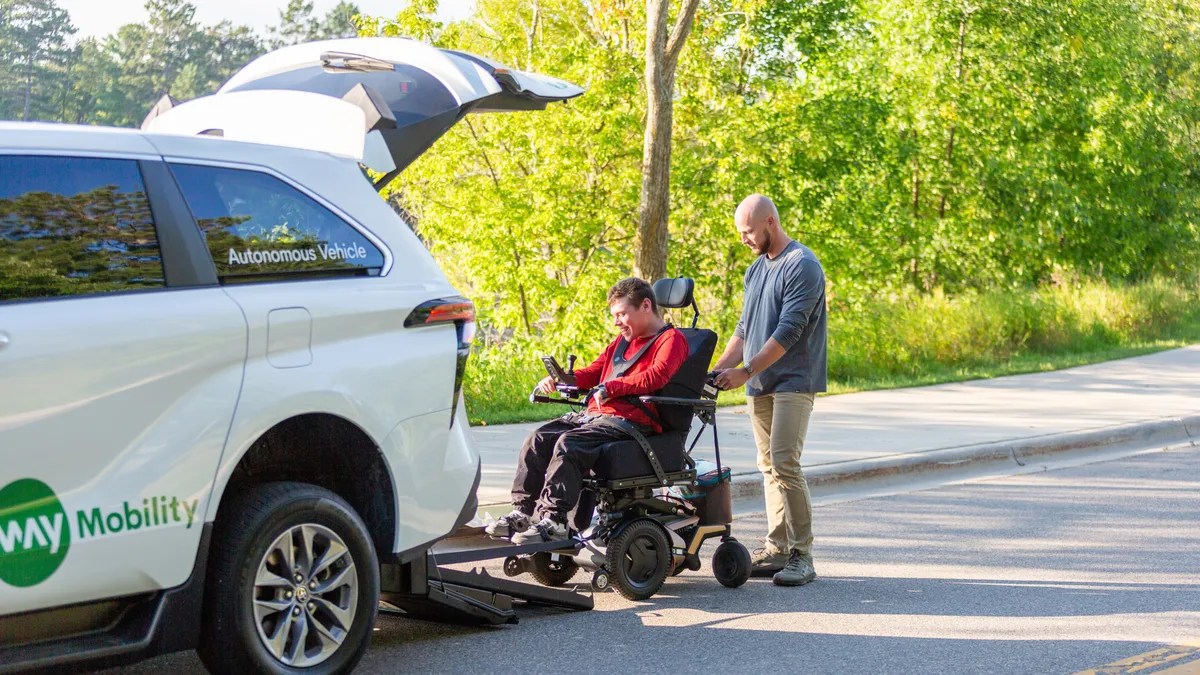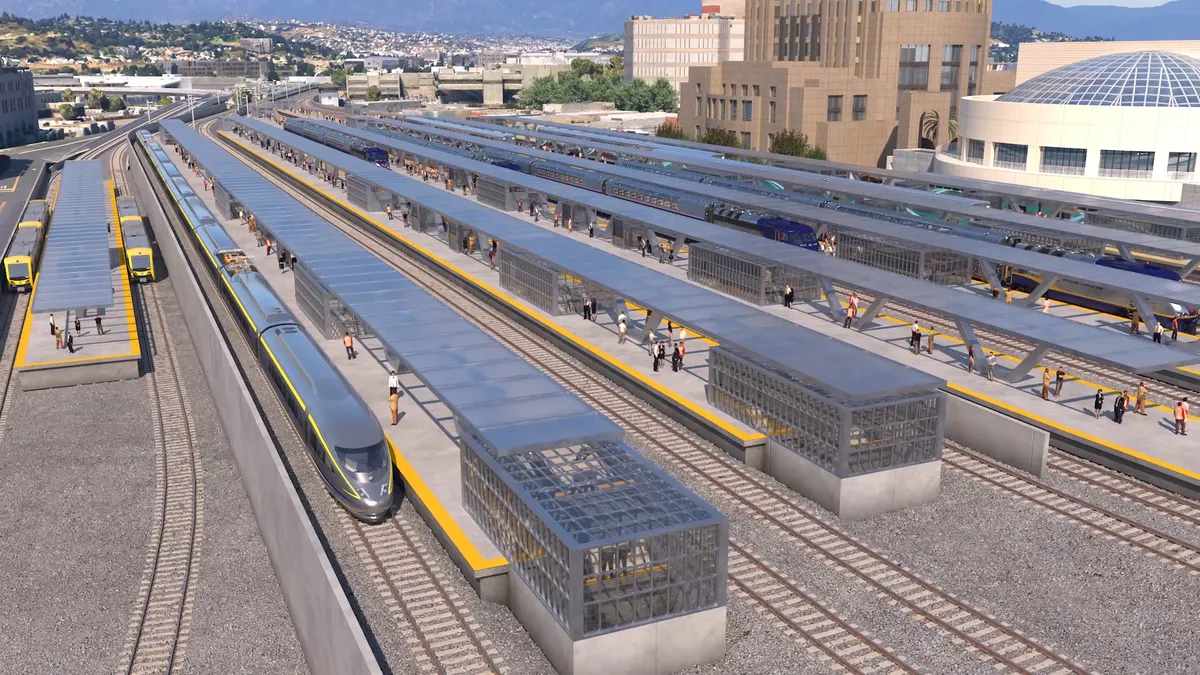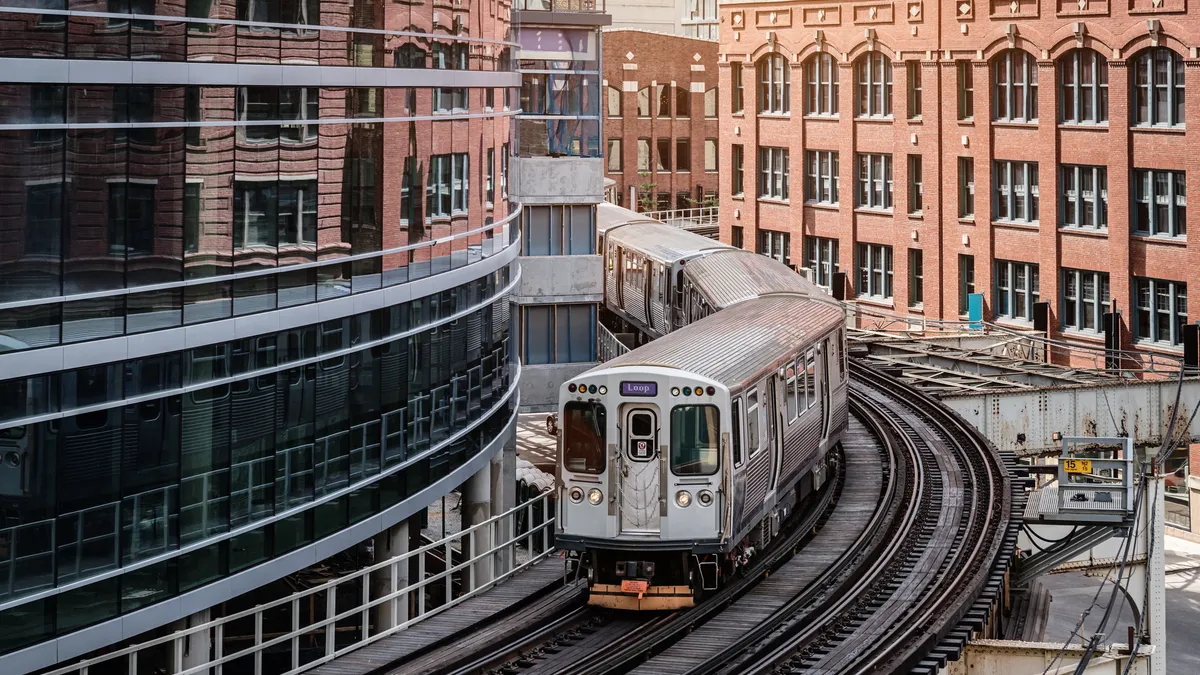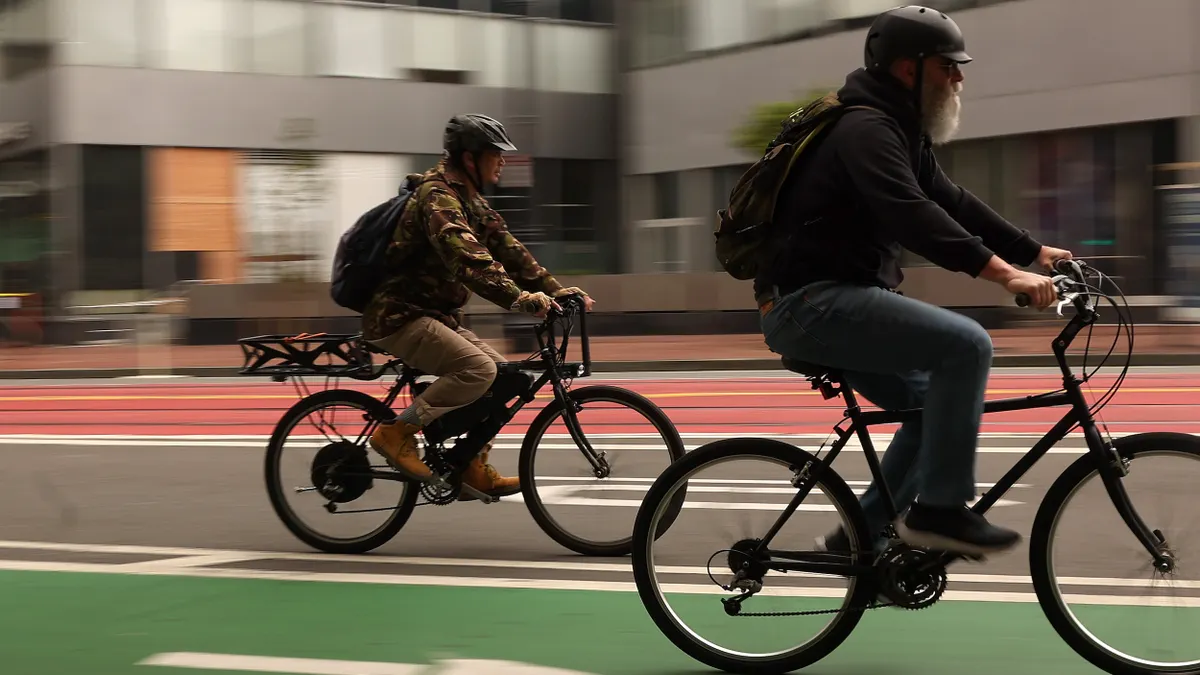Amazon recently released an eight-page request for proposals in its search for a fitting location to build its second headquarters, dubbed "HQ2." That RFP kindled excitement in dozens of cities across North America, but it's viewed by others as a rather arrogant move, both in its uncommon strategy for a private business and the weighty list of desired location qualities contained within.
The RFP gives interested cities a plethora of life-changing factors to mull over before leaping in with a submission — and many of the changes can be anticipated by examining Seattle's evolution since Amazon moved in 23 years ago.
"The City of Seattle values Amazon’s transformative presence, as an economic engine, civic partner and globally recognized champion of innovation," a spokesperson for the city's Office of Economic Development wrote in an email to Smart Cities Dive. "Amazon has made Seattle its home, its innovation lab and its platform for local and international job creation."
Yet it is believed that Amazon has simply maxed out its resources in Seattle, leaving the torch to be passed on. And cities' speed with responding to the RFP might not seem surprising because Amazon surely will boost the winning city's economy with a new $5 billion facility and promise of up to 50,000 new high-salaried jobs. Amazon also credits its investments in Seattle between 2010 and 2016 as having added $38 billion to the city's economy.
But in addition to its appeal for large cities with top-notch universities and significant transit infrastructure, the retail behemoth also included a section with thinly-veiled insinuations about preferential treatment for municipalities that offer incentives such as tax breaks. Taxpayer-funded incentives have become a more widely used practice, but not all municipalities believe the long-term costs outweigh the benefits.
One of Amazon's site requirements is to be within one to two miles of major highways and arterial roads. Regardless of how solid a city's highway infrastructure is, an influx of 50,000 people — even over the span of a number of years — will have an acute effect on workers' commutes. Seattle's rapid and continued population growth over the past two decades, in a large part due to Amazon, now pushes it closer to the top of lists ranking cities with the longest commute times. The Washington State Department of Transportation's annual congestion report said that although the state is improving economically, "the overall well-being of its transportation system is worsening. Having more and more drivers heading to work is a sure sign of prosperity but it is also causing slow flowing, congested arteries that make it harder and harder for commuters to reach their destinations."
Another core preference listed in the HQ2 RFP is direct access to mass transit such as rail, subways and buses. Seeking out a city with a well-functioning transit system will help to keep some of the thousands of new residents off the roads. But if half of the new Amazon hires commute without a car, which is the estimate Amazon cites for its Seattle campus, that could add about 25,000 new transit users in a short timeframe. Even a robust transit infrastructure might be forced into expansion under such conditions. That's what happened in Seattle, which has been adding transit options to keep up with the increasingly high volume of commuters. Last year Amazon even launched its own shuttle service to bring workers from the suburbs into downtown Seattle. These factors collectively indicate that whichever city lands HQ2 might want to have a plan for broadening its existing transit infrastructure, potentially in a short time period.
"Having more and more drivers heading to work is a sure sign of prosperity but it is also causing slow flowing, congested arteries that make it harder and harder for commuters to reach their destinations."

Washington State Department of Transportation
The winning city can expect higher land values once HQ2 is built, thanks to the development the project will spur. More high-income earners in the area will also create an increased demand for housing, which could drive up housing costs. Higher land values and housing costs are frequently harbingers of an overall cost-of-living spike. Seattle, for example, now ranks in the top 10 most expensive cities in America, according to Cost of Living Index data. Despite the resulting high prices, though, the desire for other businesses to be close to the economic powerhouse clearly is a draw. Amazon is credited with helping Seattle add 53,000 jobs in addition to the 40,000 at its headquarters.
Although it might rank lower than economics on the list of things an HQ2 contender chooses to analyze, a potential cultural change should nonetheless be examined. Amazon's presence has changed a previously industrial portion of Seattle into a tech hub. Largely gone are the widely-held perceptions of the city being a haven for outdoors enthusiasts and grunge culture. Those have been replaced with other images that accompany a gradual population shift due to the prominence of the high-salaried, white males who dominate the tech industry. Infusing an area with a large contingent of a homogeneous demographic eventually strips a city of at least some of its diversity and culture, a phenomena for which Seattle is coming under fire. That being said, new localized cultures also can develop from population shifts. The skill lies in fostering the right balance of old and new.
That's a lot to mull over in not a lot of time. Considering that Amazon is giving cities six weeks to submit proposals, the winning city should be announced later this year and construction on HQ2 is anticipated to start in 2019. Regardless of which city is chosen, it will undergo both anticipated and unanticipated transformations, just as Seattle has. Major change rarely is exclusively bad or good — Seattle has experienced its share of both because of Amazon — but many believe the economic gains tip the scales to the positive side.







